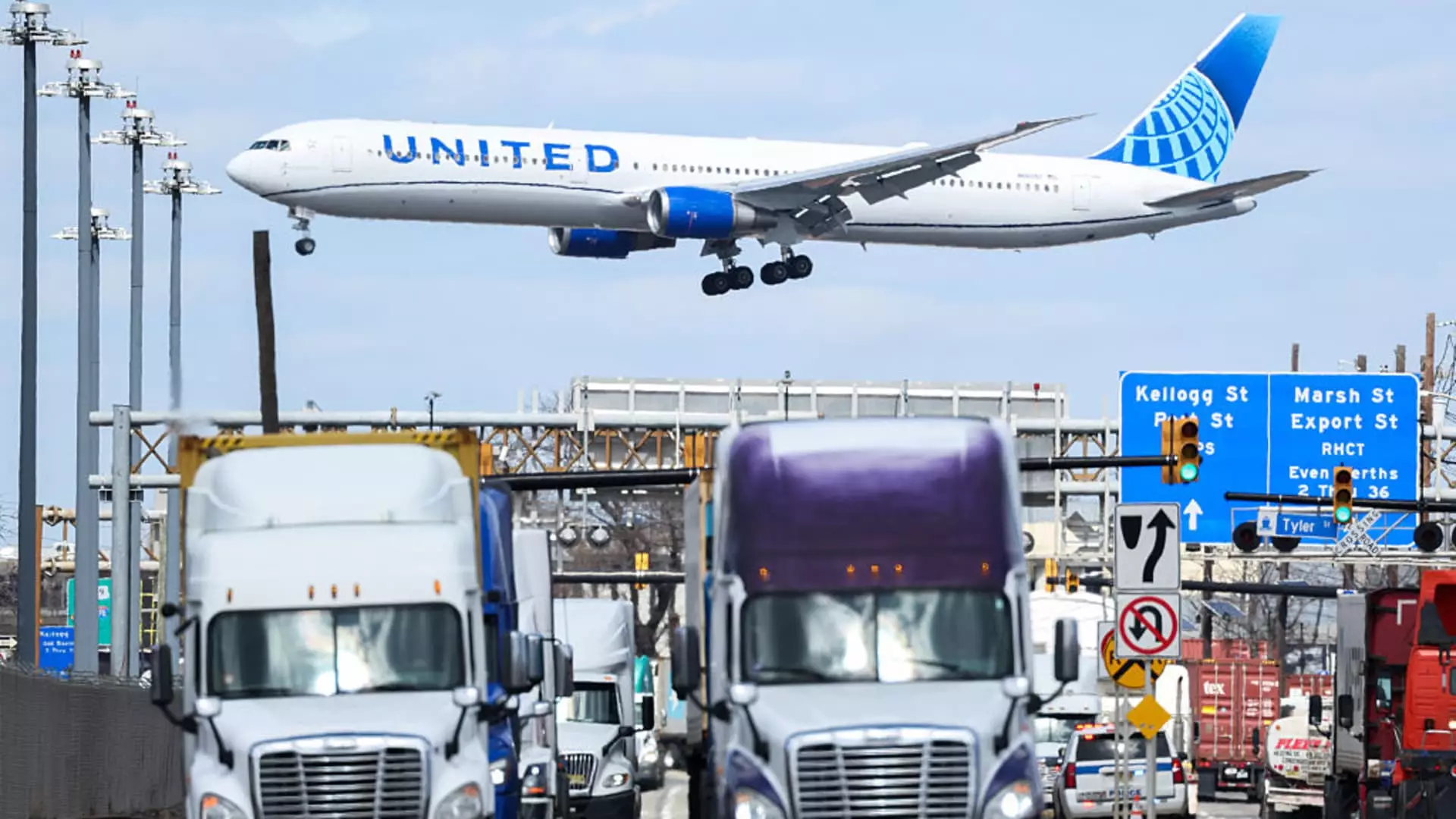United Airlines has recently revealed its financial outlook, demonstrating a mix of confidence and caution as it navigates through a turbulent economy. In a remarkable move, the airline has maintained its full-year profit forecast while simultaneously issuing a second, more conservative projection should a recession hit the U.S. This dual approach underscores the unique volatility that the airline industry faces today—a sector historically influenced by external economic forces, from fluctuating fuel prices to shifting consumer sentiments. It’s a strategy that reveals a calculating optimism about travel, yet acknowledges the ever-looming specter of recession.
The company’s proclamations signal an understanding that the current macroeconomic environment is as unpredictable as ever. Even as United Airlines reports a notable profit of $387 million for the first quarter, contrasting sharply with its losses during the previous year, the executive team remains acutely aware that factors beyond their control could easily disrupt this fragile stability. As CEO Scott Kirby has hinted, the airline’s strategy is deeply rooted in adaptability—an approach that will be tested as domestic travel demand wanes while international bookings soar.
Depressed Domestic Demand: A Call for Strategy Reevaluation
One of the stark realities laid bare by United’s first-quarter report is the sharp decline in domestic flight revenues, which dipped by nearly 4% compared to last year. This stagnation inherently calls into question the sustainability of growth, particularly as the airline plans to reduce its domestic flight capacity by 4% in the third quarter. This decision to cut back while holding steady on international routes seems to indicate a pivot towards where customer interest and spending are more robust. But it also raises eyebrows as to how the airline plans to sustain profitability amid a sector that operates on razor-thin margins, especially in less lucrative domestic markets.
This trend is not just isolated to United. Competitors like Delta Air Lines are voicing similar concerns regarding growth plans and market unpredictability. For an industry that has historically relied on a steady stream of domestic travel, the pivot to international routes may reflect a deeper uncertainty about the resilience of American consumers and their willingness to spend on travel during economic downturns.
The High-Value Passenger: A Silver Lining?
In stark contrast to the daunting challenges of domestic bookings, United’s report highlights the distinct rise in premium-cabin bookings, which increased by an impressive 17%. This trend may offer a glimmer of hope in an otherwise murky economic forecast. High-value travelers—those willing to spend on premium services—seem to be countering the overall economic headwinds, giving airlines a crucial revenue stream to offset declines elsewhere. This ability to capitalize on affluent leisure and business travelers may ultimately separate the wheat from the chaff among airlines—those who can innovate their offerings and cater to these shifting dynamics will likely prevail.
Moreover, while one might be tempted to dismiss the rise in international bookings as merely a response to changing consumer preferences, it also signals an opportunity for revenue diversification. United’s focus on sustaining international travel is an astute move, particularly as air travel globally begins to rebound from pandemic lows.
Cancellation Amidst Competition: The Fragility of Forecasts
Despite the hopeful indicators, the wider economic landscape remains fraught with uncertainty. As competitor airlines like Delta have publicly refrained from reaffirming their hyped forecasts, it’s evident that the entire sector is on edge. The implications of potential recessions, trade wars, and global political instability loom large and can have profound impacts—showing that even once-thriving giants can struggle when faced with external shocks.
In this climate, United’s mixed message—promising record profits while feeding the recession narrative—seems more of a hedged gamble than a solid foundation upon which to build future growth. At a time when consumers are cutting back due to heightened apprehension about the long-term economic outlook, how long will even the allure of premium cabins and international travel sustain if the average American family weighs their budget against uncertainty?
Ultimately, United Airlines finds itself navigating an intricate balance, trying to cater to high-value passengers while absorbing the shocks of a lagging domestic market. Their future hinges not only on their capacity to innovate but also on a deeper understanding of the unpredictable economic environment. The skies may not be as clear as they appear, and the journey ahead is laden with challenges that will test the resilience of the airline and its leadership.


Leave a Reply